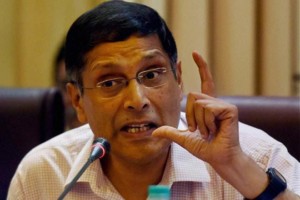 NEW DELHI: The Goods and Services Tax (GST) implementation has increased indirect taxpayer base by more than 50 per cent with 34 lakh businesses coming into the tax net, the Economic Survey said today.
NEW DELHI: The Goods and Services Tax (GST) implementation has increased indirect taxpayer base by more than 50 per cent with 34 lakh businesses coming into the tax net, the Economic Survey said today.
The Survey, authored by Chief Economic Advisor Arvind Subramanian said, preliminary analysis of data shows GST registrants rose mainly on account of large increase in voluntary registrations, especially by small enterprises that buy from large enterprises and want to avail themselves of input tax credits.
“The GST has increased the number of unique indirect taxpayers by more than 50 per cent– a substantial 3.4 million,” it said, adding GST embodies and heralds a radical alteration and enlargement in the understanding of the Indian economy.
Belying “confusion and anxiety” surrounding GST collections, the Survey said the uncertainty will be removed once the system stabilizes later this year.
“But the provisional assessment is this: revenue collection under the GST is doing well, surprisingly so, for such a transformational reform,” it said, adding the taxes that GST has subsumed had fetched Rs 9.7 lakh crore to the exchequer in 2016-17.
As per the data available, GST collections in July was over Rs 95,000 crore, while in August the figure was over Rs 91,000 crore.
In September, it was over Rs 92,150 crore, October Rs 83,000 crore, November Rs 80,808 crore and December Rs 86,703 crore.
The Survey said the highest number of GST registrants are in the states of Maharashtra, Uttar Pradesh, Tamil Nadu and Gujarat. Uttar Pradesh and West Bengal have seen large increases in the number of tax registrants compared to the old tax regime.
“The distribution of the GST base among the states is closely linked to the size of their economies, allaying fears of major producing states that the shift to the new system would undermine their tax collections,” the Survey said.
The Survey, tabled by Finance Minister Arun Jaitley in the Lok Sabha, said there are about 17 lakh businesses registered under GST despite their turnover being below the threshold limit of Rs 20 lakh.
One of the many benefits of the GST was the voluntary compliance it would elicit, it said.
As on December 2017, 98 lakh businesses were registered under the GST regime, higher than the total indirect tax registrants under the old system.
“Therefore, adjusting the base for double and triple counting, the GST has increased the number of unique indirect taxpayers by more than 50 percent — a substantial 3.4 million,” it said.
The Survey also said that Central GST (CGST) was lower than State GST (SGST), whereas ideally they had to be equal.
This possibly was because of unutilized credit available in respect of excise and service tax.
It said the pre-GST revenue collection by Centre and states was Rs 9.7 lakh crore, while the estimated annualized GST revenue collection is expected at Rs 10.9 lakh crore.
The Survey said based on the trends of revenue collections, the revenue neutral rate (RNR) of GST should be between 15-16 per cent.
In December 2015, a Subramanian-headed panel had recommended RNR should be between 15-15.5 per cent for GST, with a preference for the lower one.
Deloitte India Partner and Lead Economist Anis Chakravarty said there seems to be a considerable improvement in store for direct and indirect tax collections that can in turn lead to better fiscal numbers.-PTI







